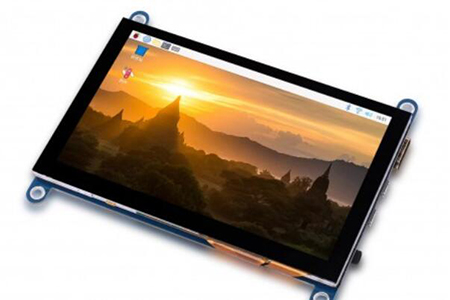What are the different types of screen displays?
Views: 1107 Update date: Nov 16,2023
There are various types of screen displays used in different electronic devices. Here are some common types:
Cathode Ray Tube (CRT): Older technology used in traditional computer monitors and television sets. CRTs use electron beams to generate images on a phosphorescent screen.
Liquid Crystal Display (LCD): Found in many devices such as computer monitors, TVs, and smartphones. LCDs use a liquid crystal solution sandwiched between two layers of glass or plastic to modulate light and produce images.
Light Emitting Diode (LED): A type of LCD that uses LED backlighting instead of traditional cold cathode fluorescent lamps (CCFL). LED displays are thinner, more energy-efficient, and provide better contrast than traditional LCDs.
E-ink (Electronic Ink): Commonly used in e-book readers like Amazon Kindle. E-ink displays mimic the appearance of ink on paper and are energy-efficient, providing good readability in various lighting conditions.
AMOLED (Active Matrix Organic Light Emitting Diode): Similar to OLED but uses an active matrix technology for better control over each pixel. AMOLED displays are commonly found in high-end smartphones.
MicroLED: An emerging technology that uses microscopic LEDs to create individual pixels. MicroLED displays promise high brightness, better contrast, and longer lifespan.
Quantum Dot (QLED): Found in some high-end TVs, QLED displays use quantum dots to enhance color and improve overall picture quality in LCD-based screens.
Flexible and Foldable Displays: Advancements in display technology have led to flexible and foldable screens, allowing for more versatile and portable devices. These displays are often found in foldable smartphones and some experimental devices.
3D Displays: Designed to provide a three-dimensional viewing experience. Various technologies, including stereoscopic and autostereoscopic methods, have been used for 3D displays.
These display technologies have evolved over time, and newer technologies continue to emerge, offering improved performance, energy efficiency, and form factors. The choice of display technology depends on the specific requirements and applications of the device.
Cathode Ray Tube (CRT): Older technology used in traditional computer monitors and television sets. CRTs use electron beams to generate images on a phosphorescent screen.
Liquid Crystal Display (LCD): Found in many devices such as computer monitors, TVs, and smartphones. LCDs use a liquid crystal solution sandwiched between two layers of glass or plastic to modulate light and produce images.
Light Emitting Diode (LED): A type of LCD that uses LED backlighting instead of traditional cold cathode fluorescent lamps (CCFL). LED displays are thinner, more energy-efficient, and provide better contrast than traditional LCDs.
Organic Light Emitting Diode (OLED): OLED screens are made of organic compounds that emit light when an electric current is applied. OLED displays are found in high-end smartphones and TVs. They offer better color reproduction, higher contrast ratios, and faster response times compared to LCDs.
E-ink (Electronic Ink): Commonly used in e-book readers like Amazon Kindle. E-ink displays mimic the appearance of ink on paper and are energy-efficient, providing good readability in various lighting conditions.
AMOLED (Active Matrix Organic Light Emitting Diode): Similar to OLED but uses an active matrix technology for better control over each pixel. AMOLED displays are commonly found in high-end smartphones.
MicroLED: An emerging technology that uses microscopic LEDs to create individual pixels. MicroLED displays promise high brightness, better contrast, and longer lifespan.
Quantum Dot (QLED): Found in some high-end TVs, QLED displays use quantum dots to enhance color and improve overall picture quality in LCD-based screens.
Flexible and Foldable Displays: Advancements in display technology have led to flexible and foldable screens, allowing for more versatile and portable devices. These displays are often found in foldable smartphones and some experimental devices.
3D Displays: Designed to provide a three-dimensional viewing experience. Various technologies, including stereoscopic and autostereoscopic methods, have been used for 3D displays.
These display technologies have evolved over time, and newer technologies continue to emerge, offering improved performance, energy efficiency, and form factors. The choice of display technology depends on the specific requirements and applications of the device.




